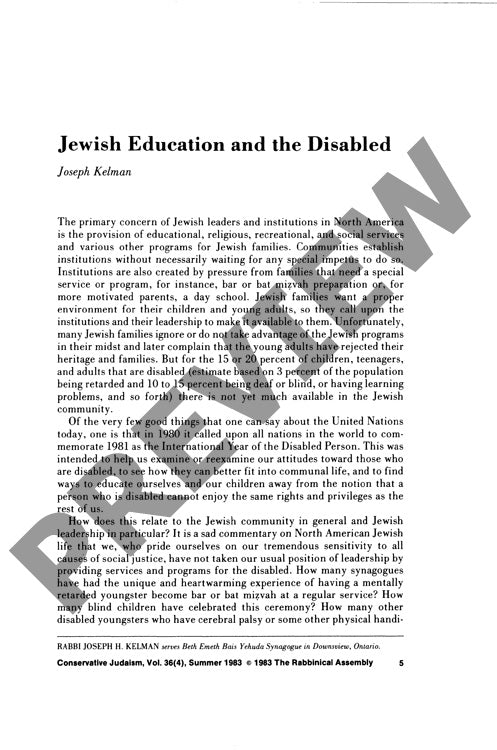Jewish Education and the Disabled
Couldn't load pickup availability
North American Jewish communities are failing to meet the educational and religious needs of 15-20 percent of their disabled population, perpetuating a cycle of exclusion that stems more from unconscious attitudes than intentional discrimination. Through case study analysis of Toronto-based initiatives and examination of institutional barriers within synagogues, Hebrew schools, and Jewish community centers, this research reveals how both community leadership and families of disabled individuals contribute to ongoing non-participation. Despite these challenges, successful interventions have emerged, including specialized schools like Kadima, Ezra, and Shearim, modified religious ceremonies, and integration into mainstream synagogue services. Rabbinical leadership proves particularly critical in breaking down attitudinal barriers through advocacy and community education. Analysis of these programs demonstrates that meaningful Jewish participation for disabled individuals requires a coordinated approach: rabbi-initiated outreach, comprehensive teacher training, enhanced physical accessibility, specialized educational materials, and sustained community funding. The evidence suggests that full inclusion of disabled individuals in Jewish religious and educational life is achievable through deliberate institutional commitment and systematic attitude modification.

More Information
-
Physical Description
-
Publication Information
Published 1983
ISBN
-
Publication Credits
Joseph Kelman

